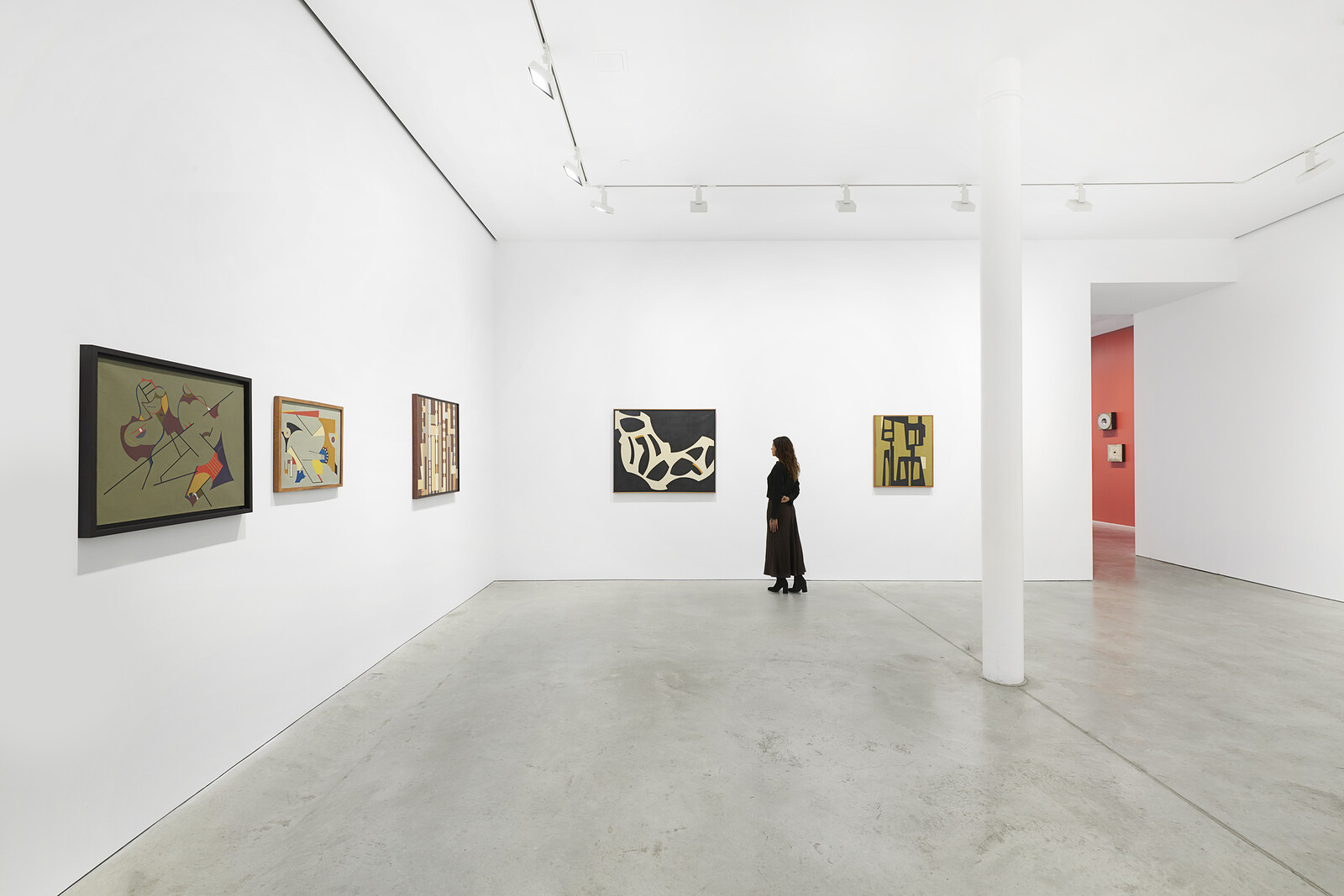The Invisible Plot of Things
January 6–February 15, 2023
James Cohan is pleased to present Elsa Gramcko: The Invisible Plot of Things, curated by Gabriela Rangel, on view at the gallery’s 48 Walker Street location through February 15, 2023. Elsa Gramcko (b.1925, Puerto Cabello, Venezuela, d.1994, Caracas, Venezuela), blended geometric abstraction and surrealism to produce visually arresting paintings, dimensional assemblages and totemic objects. Gramcko earned a distinct place in the history of Latin American art, thanks to her independent drive and her refusal to subscribe to one modality of art production. Her art practice spoke critically of the shifting social and economic landscape of Venezuela at the height of the country’s prosperity in the 1960s and 70s. She repurposed industrial debris and automobile parts—symbols emblematic of the country’s booming oil extraction economy. By reclaiming things, Gramcko imbued them with a sense of poetry and humanism as a silent protest to Venezuela’s rampant modernization.
Elsa Gramcko: The Invisible Plot of Things is presented in partnership with Sicardi / Ayers / Bacino. This exhibition of over forty artworks spanning three decades, from the 1950s through 1970s, attest to Gramcko’s significant contributions to global modernism, marked by her distinctive language of abstraction.
Gramcko’s oeuvre defied classification; as her language of artmaking evolved from geometric abstraction to surrealism to informalism. Her explorations were driven by her keen sense of materiality and geometric form and her ability to embed objects with new meaning. Unlike her Venezuelan contemporaries, namely Alejandro Otero and Jesús Rafael Soto, she veered away from the Kinetic movement that prioritized constructivist art as a participatory process. Gramcko’s work is not participatory in the physical sense, but rather, it invites viewers to enter into a subconscious state and question what it means to look closely.
Elsa Gramcko embraced gritty textures, rusted metals and car parts, working against the illusory optimism of the Kinetic movement. She recomposed these cast-off materials of modernity as a meditation on a country ruled by oil. Her art practice was a critical approach to what Rangel and art historian Aruna D’Souza describe as “petro-modernity”; a period of booming oil-extraction in Venezuela, coupled with rapid urban development in the capital city of Caracas in the 1960s and 70s. Gramcko affixed discarded industrial debris, such as car battery cells and headlights, directly onto masonite–emblematic symbols of the state of the country and its dependence on the automobile. In Gramcko’s words, “These works are questioning contemporary society… it’s really about trying to defend us against becoming automated machines, becoming the teeth on a gear, and it’s about privileging our individuality.”
Please join us at 48 Walker Street on Saturday, January 28 at 2pm to celebrate the launch of Elsa Gramcko: The Invisible Plot of Things, the first comprehensive monograph dedicated to the late Venezuelan artist. On this occasion, we are delighted to host exhibition curator Gabriela Rangel and writer Aruna D’Souza in conversation, moderated by Claudia Calirman, Associate Professor of Art History & Chair, Department of Art & Music, John Jay College of Criminal Justice, CUNY. Please RSVP to info [at] jamescohan.com.
Elsa Gramcko: The Invisible Plot of Things features essays by Rangel and D’Souza, which examine Gramcko’s critical approach to petro-modernity, along with unpublished letters the artist wrote to Alejandro Otero in the early 1960s that defined her relationship to objecthood. Also included is a text by Luis Felipe Farías S. and a conversation between Gramcko, Miguel Miguel, and Margot Römer. Elsa Gramcko: The Invisible Plot of Things is published by James Cohan & Sicardi I Ayers I Bacino with special thanks to Todd Bradway and ARTBOOK LLC & D.A.P.—Distributed Art Publishers, Inc.









